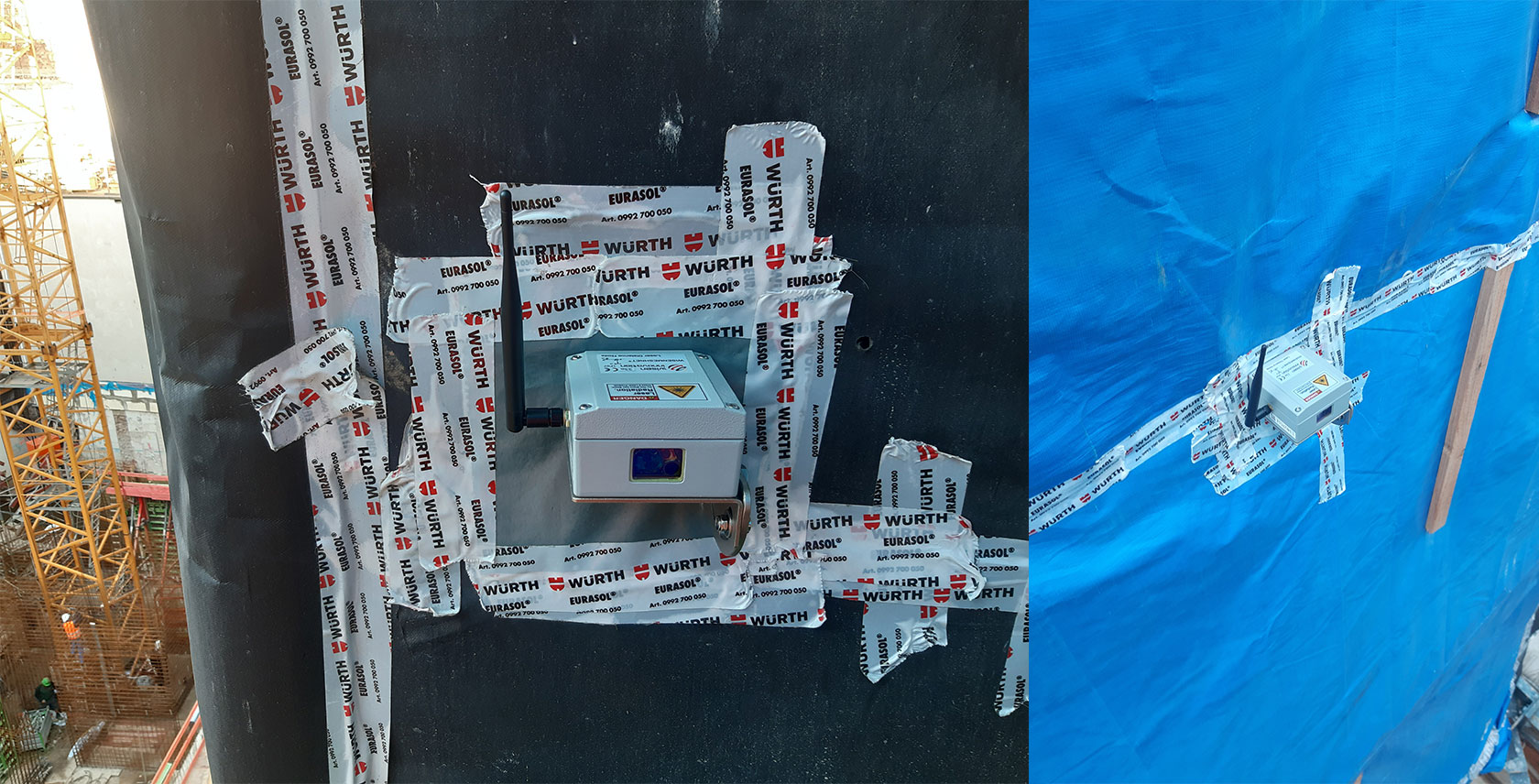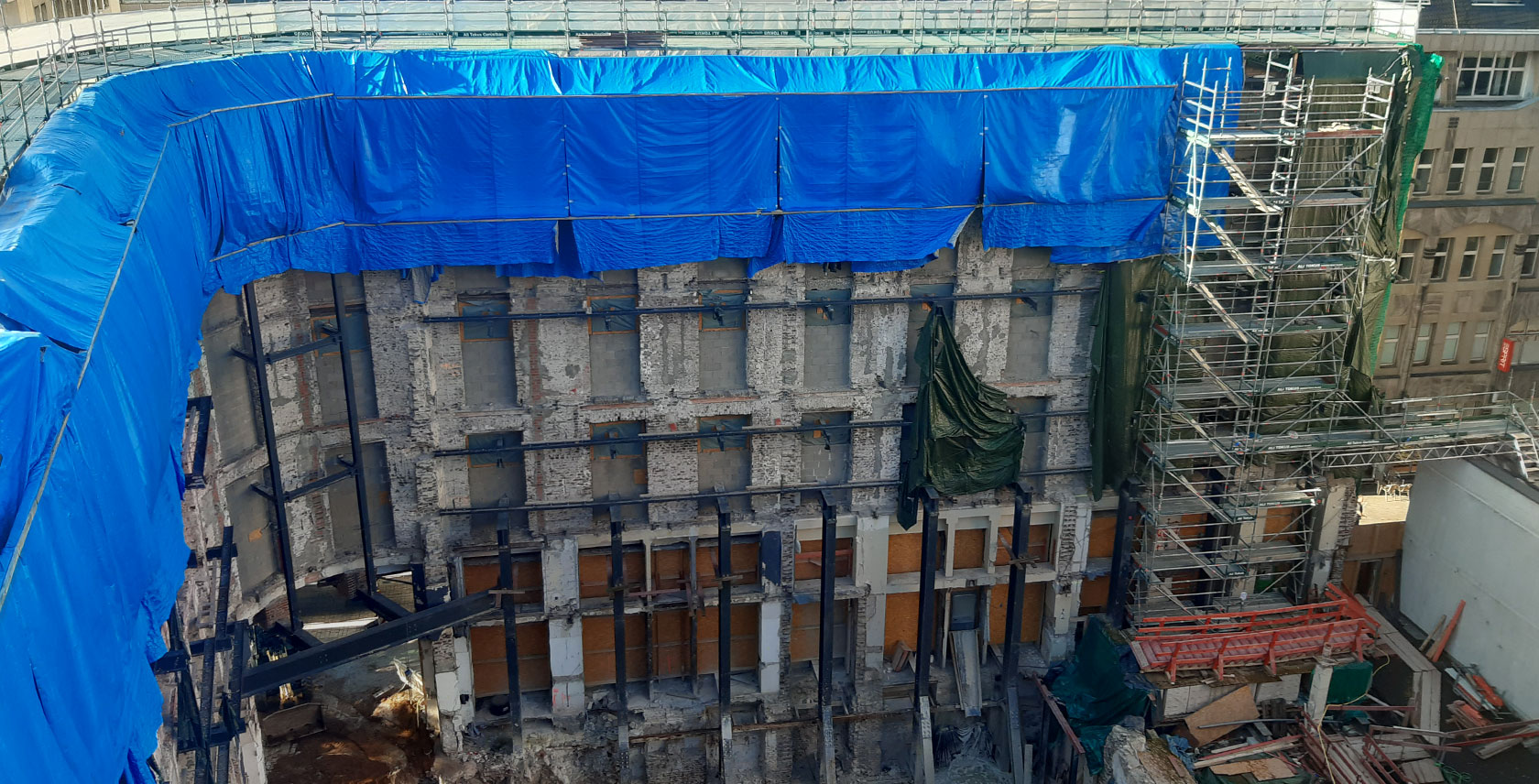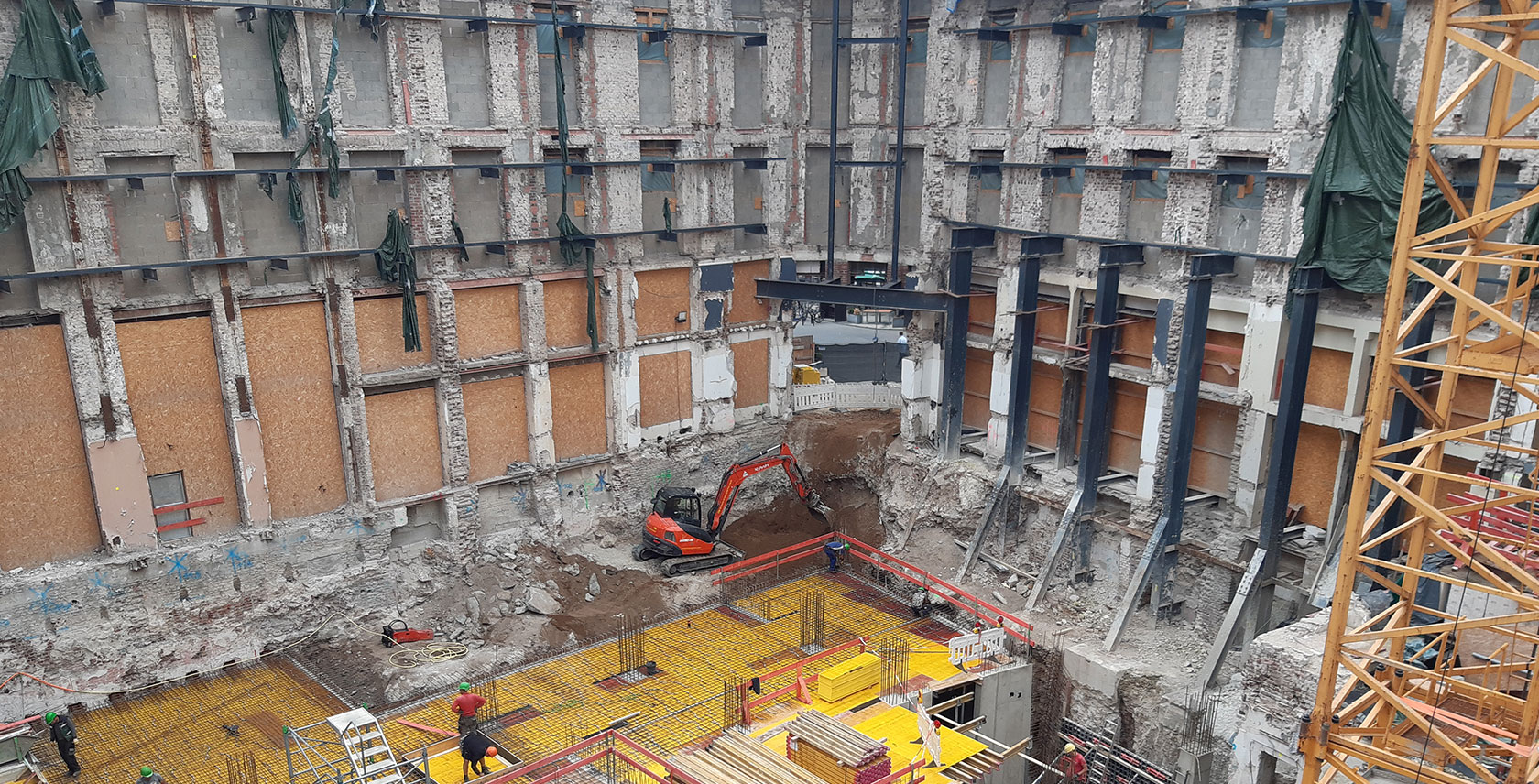Monitoring a heritage hotel in the historic centre of Cologne
Case Study

Author: Steven Thurgood
In the ancient city of Cologne, the Dom Hotel is one of the oldest Grand Hotels in Europe. It first opened in 1857, underwent its first renovation in the 1800s, another after the Second World War and has been in a process of modernisation since 2014. Germany’s Cultural Heritage Policy ensures the preservation of historic buildings and culturally significant structures, meaning that the 5-star hotel’s original façade and staircase must remain. Construction operations began in 2016 and partial demolition of the internal structure was agreed upon in 2019.
Surveying engineering specialist, Vermessungsbüro KDS was appointed by the project to undertake the structural monitoring of the heritage building during construction. Following the design risk assessments for the demolition, structural moment tolerances were calculated for the deformation and movements of the heritage façade. Martin Reck of Vermessungsbüro KDS worked with Leica Geosystems’ regional monitoring solutions expert, Heiner Gilleßen, to design a plan for monitoring the sensitive structure.
Deploying solutions built for sensitivity
Leica Geosystems would usually recommend deploying the Leica Nova TM60 and GeoMoS Edge solution to measure prisms on the hotel’s structure, but the support frame on the façade and its coverings meant that there was no line of sight for an optical system. Instead Gilleßen suggested a mix of solutions from the wider Hexagon Geosystems, Leica Geosystems and third-party portfolio that he could integrate into the GeoMoS Monitoring Solution. This suite allows flexibility and speed in understanding and reacting to complex demands in monitoring projects.
With the specification requiring monitoring of the façade, yet no physical access or line of sight for optical devices, Heiner Gilleßen recommended wireless tilt sensors that could be installed quickly and easily while requiring little maintenance. All the data from the sensors could still be managed and visualised from Leica GeoMoS Now! - a web-based application that provides easy, but secure access for authorised personnel to view data. This combination of tools gave the customer the capability to add systems without having to learn or implement a new software suite.
In total, 18 sensors were installed onto various locations on the façade, allowing precise automated monitoring to be completed for the rotation of the façade as demolition of the inner hotel structure was completed. This included 15 two-axis inclination sensors, a gateway and a solar panel. Distance sensors were also used in combination with the basic tilt sensors to measure offsets from the structural walls and ensure the geometry of the structure remained constant. This was particularly relevant as the elevator shaft in the hotel was to remain undisturbed by the construction teams working on the project. Constant offset and inclination readings enabled the safe monitoring of the elevator shaft.

Generating data-driven results using automation
Since its installation in September 2019, the Leica solution conducts 18 readings every 30 minutes, producing approximately 550,000 data records with an extra 1,000 readings per day. This was available in GeoMoS within 120 seconds of data measurement on-site and made available on the cloud platform of GeoMoS Now!, providing live data around the clock.
When the works programme was extended due to archaeological finds in the basement excavation, the extension of the monitoring scheme’s life was not a problem. The equipment installed is designed to last maintenance-free for years due to 30-minute data acquisition intervals, self-powered internal batteries and IP65 rated enclosures for all-weather working. Gilleßen provided local and remote training for those new to the scheme.

Protecting the heritage of the Dom Hotel
Martin Reck and the Vermessungsbüro KDS wider team were very satisfied with the solution provided. In fact, they also utilised a selection of surveying solutions for manual surveying works throughout the project, including the Leica Sprinter 150 Digital level, Leica DNA03, Leica LS15, Leica Disto, Leica Viva GS12 GNSS, Leica Viva GS16 GNSS, Leica TS15 and TS16 Total Station and Leica Viva CS10 Field Controller.
Automation was essential in ensuring the façade was able to remain in the Dom Hotel. With 120 guest rooms and suites on the way for Cologne’s visitors to enjoy, Leica Geosystems played a significant role in protecting the hotel’s rich heritage. As cities evolve and structures develop, tools such as the GeoMoS Monitoring Solution and Leica GeoMoS Now! are ensuring structural safety and the preservation of history.
Interested in monitoring? Please feel free to read further case studies, showing how our customers use our solution to improve their monitoring workflow:























